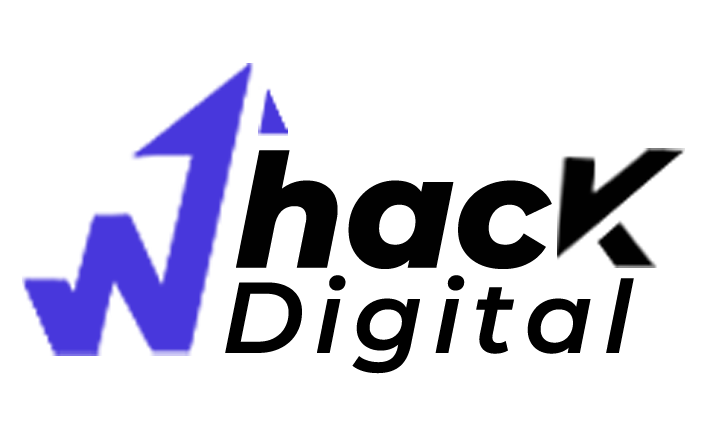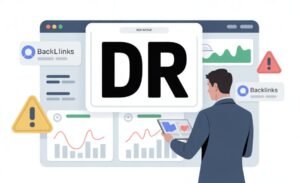Ever get the feeling an ad is reading your mind? You’re thinking about upgrading your phone, and suddenly every scroll shows new models, accessories, even “top 10 tech deals” blogs. That’s not luck. That’s the ad targeting doing its thing.
To be more exact, it is AI behind the scenes that learns preferences and interests even before you have a chance to voice them. A typical Artificial Intelligence Developer would say it’s just data models predicting patterns, but to most of us, it feels a bit like magic.
If you’re a brand or marketer trying to make your budget stretch, this stuff is gold. Let’s get into how Artificial Intelligence is changing the way we target ads, without getting too nerdy.
What’s AI-Powered Ad Targeting, Anyway?
The Short Version:
In its simplest definition, ad targeting refers to displaying relevant ads to people. Not even a drop of the shotgun approach, they tossed a prayer and hoped they hit. Having the AI involved, the entire process gets even sharper, faster, and, truth to be told, a lot smarter.
It is educated by what clicks, where they visit, and how long, and even what device it is using. Then it predicts who’s likely to respond to what. That’s the real magic. Or rather, that’s math and data doing their thing.
Why Is It Better Than the Old Way?
Before AI? Marketers used basic ad targeting: age, gender, maybe location. Useful, but pretty surface-level.
Now? AI systems crunch millions of data points and spot patterns no human could. They can tell that someone who watches three cooking videos a week and reads travel blogs is 87% more likely to buy an air fryer. Weirdly specific, but it works. And if you’re wondering—yes, it boosts conversions.
How Artificial Intelligence Really Works?
First Comes the Data:
It all begins with data. AIs consider watching what people do online: which pages they open, how long they scroll the screen, what they purchase, and what they do not pay attention to. It creates a pattern, not a name, but habits.
It is like having that one friend who knows exactly the type of snacks you may like and what shows you have been binge-watching. But smarter. And faster.
One real example? Alibaba created something called the Deep Interest Network, which boosted ad click rates by understanding how deeply users were engaging with products. Not just “clicks”—it measured things like hesitation and dwell time. Pretty clever.
Then It Makes Split-Second Decisions:
When it’s time to actually serve an ad, AI gets to work. Tools like RTB House make a decision in milliseconds about which ad to show you. It factors in timing, device, context, and behaviour history—all in real time.
A cool case study here is Delta Airlines. During the Tokyo Olympics, they used AI to link their sponsorship ads with moments people were most engaged with Olympic content. The result? Over 30 million dollars in bookings. That’s not a fluke. That’s timing + AI = results.
Real Brands Doing It Right:
Forever 21’s Smart Pivot:
Forever 21 isn’t just about fast fashion anymore. They used Meta Advantage+ to let AI build and test tons of ad creatives automatically. It found what worked and dropped what didn’t. The outcome? A 66% jump in return on ad spend, and a 23% cut in cost per conversion. Not bad for letting the machine drive for a bit.
Omneky’s “Test Everything” Approach:
Omneky takes the idea of A/B testing and goes wild with it. Their platform creates hundreds of versions of a single ad. The AI then watches performance closely and only keeps the winners running. That’s smart scaling, and it saves a ton of time guessing what creative will work.
Thinking of Using AI for Ad Targeting?
Pick Tools That Do the Thinking for You:
No need to hire a data scientist. These tools are already built to help marketers, not engineers:
- Google Ads Smart Bidding adjusts bids automatically based on predicted value
- Meta Advantage+ helps you test creatives quickly
- Microsoft Copilot suggests better headlines and even writes ad copy
Set your goals, feed the platform some info, and it’ll do the heavy lifting.
Make Sure Your Data Isn’t a Mess:
Garbage in, garbage out. That’s the rule with AI. You need clean, clear first-party data—stuff you’ve collected directly from your users. Website activity, email sign-ups, purchase history. That’s the gold. Avoid relying on third-party cookies too much. They’re being phased out, and besides, people don’t like being tracked by mystery websites.
Always Be Testing:
AI gives you speed, but you still need to steer. Run small tests. Look at the results. Tweak and repeat. The beauty of AI is it learns, but you’ve gotta guide it. It is like flying a drone. The work is done but the direction is under you.
Don’t Ignore the Bumps in the Road:
Look, AI’s not flawless. It can mess up. Sometimes it learns the wrong lesson. Sometimes it amplifies bias hiding in the data.
Meta even found that its ad system showed fewer job ads to women—even when qualifications were the same. That’s a wake-up call.
Privacy’s another big deal. If users feel creeped out or manipulated, they bounce. Make sure you’re following rules like GDPR and being upfront about data use. Respect builds trust.
What’s Next for AI in Ad Targeting?
The future? It’s going to be even more personal. Even more predictive.
By 2027, AI ad spend is expected to hit around 134 billion dollars. That’s huge. And it’ll keep growing.
Video ads are getting smarter. Voice search ads are popping up. Connected TV is the next frontier. Soon, AI will even adapt ads to your mood—based on voice tone or facial expressions. Wild stuff, honestly.
Final Thoughts – Artificial Intelligence and Ad Targeting:
Ad targeting used to be about guesswork. Now it’s data-driven, fast, and almost scary-good. But don’t let the tech intimidate you.
Start small. Use the tools. Keep it human. And let AI do what it’s best at: finding patterns, saving time, and giving your ads a better shot at landing with the right people. Because the goal isn’t just clicks. It’s a connection.
Quick FAQs:
It’s using smart tools to show people ads they’ll actually care about, based on their habits and preferences.
Pretty accurate. Some platforms see a 30% boost in click-through rates after adding AI tools.
Yep. Bias and privacy are big ones. That’s why you still need people watching the systems.
Google Smart Bidding or Meta Advantage+. Both are user-friendly and beginner-safe.
Yes, 100%. Be open, gather what you require and comply with the regulations.






